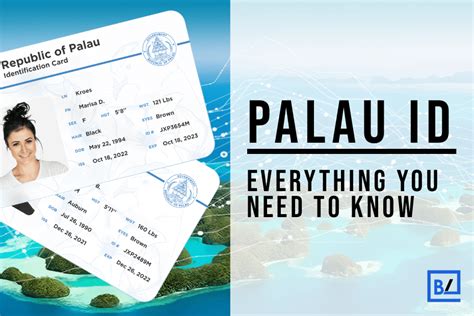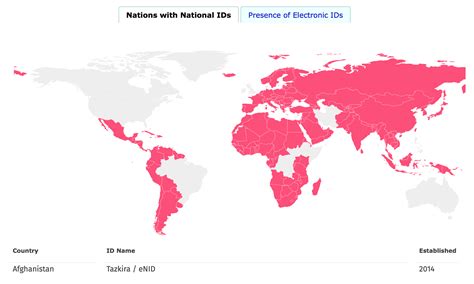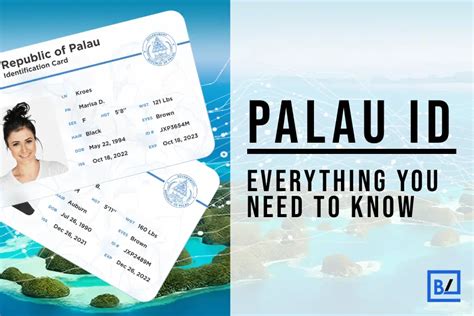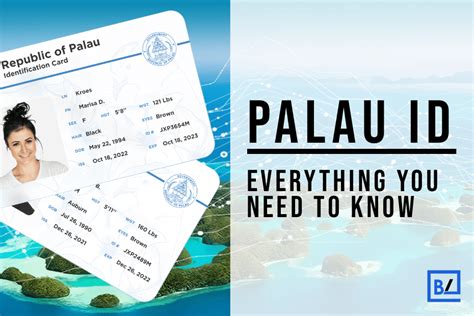Introduction
National identification (ID) systems are an essential component of modern governance, providing a secure and reliable means of identifying and verifying individuals. However, the design and implementation of these systems vary significantly across countries, influenced by cultural, political, economic, and technological factors. This article explores how national IDs differ globally, highlighting key variations in their purpose, structure, and technological advancements.

Purpose of National IDs
National IDs serve a broad range of purposes, including:
- Identity verification: Establishing an individual’s identity for various official transactions, such as voting, obtaining a passport, or opening a bank account.
- Access to government services: Providing access to social benefits, healthcare, and education.
- Criminal investigation: Identifying suspects and victims and assisting in law enforcement efforts.
- Security and border control: Verifying the identity of individuals entering or leaving a country.
Structure of National IDs
The physical structure of national IDs varies considerably. Common formats include:
- Cards: Small, portable cards made of plastic or polycarbonate, containing personal data and sometimes a photograph.
- Passports: Booklets containing multiple pages, often with security features such as holograms and watermarks.
- Electronic IDs: Devices that store digital information, such as RFID chips or smart cards.
Technological Advancements
National IDs are increasingly incorporating advanced technologies to enhance security and convenience. These include:
- Biometrics: Using physical characteristics, such as fingerprints, facial recognition, or iris scans, to uniquely identify individuals.
- Digital signatures: Applying a unique electronic signature to digital documents to ensure their authenticity and integrity.
- Mobile IDs: Using smartphones to store and access national ID information securely.
Variations in Implementation
The implementation of national IDs varies based on country-specific needs and resources. Some key variations include:
- Compulsory vs. optional: Some countries make it mandatory for all citizens to possess a national ID, while others allow for voluntary adoption.
- Centralized vs. decentralized: National IDs can be managed by a central authority or by multiple agencies at the local or regional level.
- Data collection and storage: The type and amount of data collected on national IDs varies widely, including personal information, biometric data, and financial transactions.
Case Studies
To illustrate the diversity of national IDs, consider the following case studies:
| Country | ID Format | Purpose | Technological Advancements |
|---|---|---|---|
| India | Aadhaar Card | Identity verification, government services | Biometrics, digital signatures |
| United States | Social Security Number | Identity verification, taxation | None |
| Singapore | NRIC | Identity verification, security | Biometrics, mobile IDs |
| Estonia | eID Card | Identity verification, electronic transactions | Digital signatures, smart cards |
Global Trends
Several global trends are shaping the evolution of national IDs:
- Increased security concerns: Terrorism and fraud have prompted many countries to strengthen their national ID systems.
- Demand for digital services: The rise of online transactions and government services is driving the adoption of digital IDs.
- Protection of privacy: Concerns over data privacy are leading to the development of privacy-enhancing technologies for national IDs.
Future Applications
Innovative technologies are creating new possibilities for national IDs. Potential future applications include:
- Proof of age: Verifying an individual’s age for access to age-restricted activities or services.
- Vaccination records: Storing and sharing vaccination information to facilitate public health initiatives.
- Digital wallets: Using national IDs to store and access digital currency or other financial assets.
Tips and Tricks
When considering a national ID system, governments should:
- Define clear objectives: Determine the specific purposes and scope of the system.
- Engage stakeholders: Consult with citizens, businesses, and civil society organizations to gather feedback and address concerns.
- Balance security and privacy: Implement robust security measures while protecting individuals’ data privacy.
- Foster interoperability: Ensure that national IDs can be used across different government agencies and services.
- Monitor and evaluate: Regularly assess the effectiveness and impact of the system and make adjustments as needed.
Frequently Asked Questions
1. What is the most secure type of national ID?
The most secure type of national ID incorporates advanced technologies such as biometrics and digital signatures.
2. Are national IDs mandatory in all countries?
No, the compulsion of national IDs varies from country to country.
3. How do national IDs help prevent identity theft?
National IDs provide a secure and verifiable means of identifying individuals, making it more difficult for identity thieves to impersonate others.
4. What are the risks associated with national IDs?
Potential risks include privacy concerns, data breaches, and the misuse of personal information.
5. What is the future of national IDs?
National IDs are evolving to incorporate new technologies and applications, with a focus on enhancing security, convenience, and flexibility.
6. How can I protect my national ID from fraud?
To protect your national ID from fraud, keep it secure, report any lost or stolen cards promptly, and avoid sharing your personal information with unauthorized individuals.
Conclusion
National IDs are essential tools for modern governance, providing a secure and reliable means of identifying and verifying individuals. However, the design, implementation, and technological advancements of these systems vary significantly across countries, reflecting diverse cultural, political, economic, and technological contexts. By understanding these variations, governments can tailor their national ID systems to meet the specific needs of their populations while balancing security, convenience, and privacy concerns.



